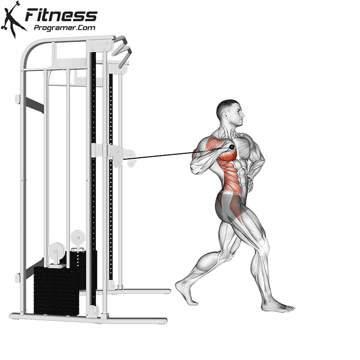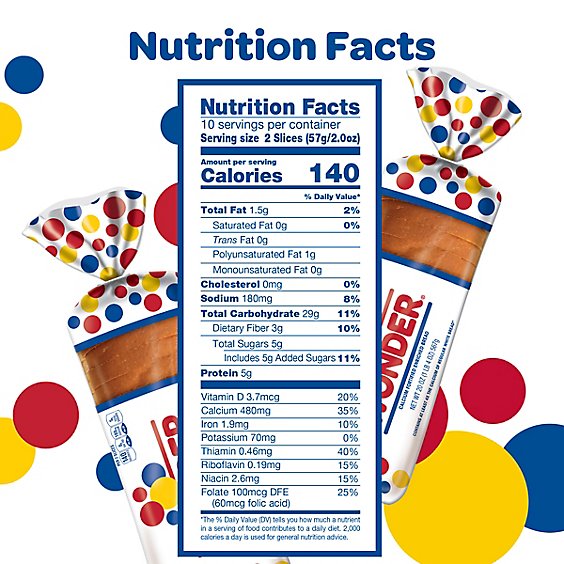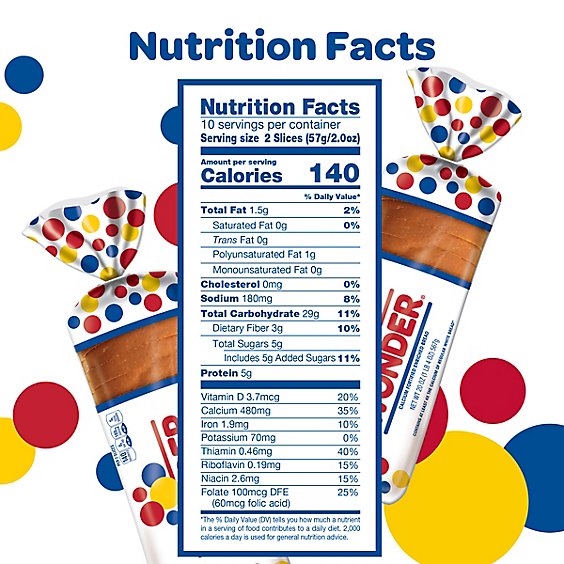Single cable chest exercises are effective for isolating pectoral muscles and improving upper body strength. They utilize a cable machine for targeted workouts.
Building a strong, well-defined chest is an aspiration for many fitness enthusiasts. Single cable chest exercises offer a focused approach to chest development, providing the ability to concentrate on one side at a time for muscular balance and increased intensity.
These exercises are user-friendly and adaptable, making them suitable for a wide range of skill levels, from beginners to bodybuilders. By using a cable machine, individuals can maintain constant tension on the chest muscles throughout the entire range of motion, leading to efficient muscle engagement. This focus on unilateral training not only helps in sculpting the chest but also enhances core stability and overall upper body coordination. Embracing a variety of single cable chest exercises into your routine can lead to impressive gains and ensure a comprehensive approach to chest training.
Introduction To Single Cable Chest Workouts
Revolutionize your fitness regime with single cable chest workouts. From toning muscles to enhancing pectoral definition, these routines pack a punch. Perfect for gym-goers at any level, the adaptable nature of cable exercises maximizes chest development.
Benefits Of Cable Exercises For Chest Development
Cable exercises are a powerhouse for chest gains. They provide unique advantages:
- Constant tension drives muscle growth.
- Improved range of motion targets different muscle fibers.
- Adjustable angles forge a well-rounded chest.
- Enhanced control reduces injury risks and betters muscle engagement.
Setting Up The Cable Machine For Chest Workouts
For the perfect setup, follow these steps:
- Adjust the cable pulley to chest height.
- Select the right weight for your fitness level.
- Choose a suitable handle and secure it to the cable.
- Stand in a stable position, ready to begin.
With your cable machine ready, you’re set to unlock the potential of single cable chest workouts.

Credit: m.youtube.com
Anatomy Of The Chest
The chest is a prominent muscle region that catches the eye. It’s made of two main muscles. These are the pectoralis major and pectoralis minor. The pectoralis major is big and fan-shaped. It sits on the upper front of your chest. The pectoralis minor is smaller. It sits under the pectoralis major.
Major Muscle Groups Targeted
- Pectoralis Major: This is the largest chest muscle. It moves the shoulder forward and down.
- Pectoralis Minor: This muscle lies beneath the pectoralis major. It helps with breathing and moves the shoulder.
- Serratus Anterior: This muscle is on the side of the chest. It helps to move the scapula.
How Cable Exercises Affect The Pectoral Muscles
Cable chest exercises are effective for the pectorals. Cables offer a steady tension on the muscles. This helps them grow and get stronger. They also allow a full range of motion. This means they can hit the muscles from various angles. With consistent training, the chest muscles develop well. They become more defined and powerful.
Key Principles For Chest Training
Building a powerful chest requires more than just lifting weights. It demands a strategic approach. This means understanding the cornerstones of chest development. Let’s explore these principles, focusing on single cable chest exercises. These can transform your workouts and sculpt a strong, well-defined chest.
Importance Of Proper Form And Technique
Proper form is crucial to target chest muscles effectively. It prevents injuries and ensures maximum muscle engagement. Below are tips to maintain form and technique:
- Stand tall: Keep your back straight and core engaged.
- Shoulder position: Roll your shoulders back and down.
- Move with control: Perform each rep with a smooth, steady pace.
- Focus on the chest: Imagine squeezing the chest muscles with each movement.
- Breath correctly: Exhale during the effort phase and inhale when returning to start.
Adjusting Resistance And Cable Height
Setting the right resistance and cable height can make or break your exercise. Use the steps below:
| Adjustment | Action | Impact |
|---|---|---|
| Resistance | Select a weight that allows you to perform 8-12 reps with good form. | Challenges muscle fibers for growth. |
| Cable Height | Adjust the pulley to align with different parts of the chest. | Targets specific areas within the chest. |
Note: Always start with lighter weight to warm-up. Increase gradually to avoid strain. Altering the cable height allows for a range of exercises targeting upper, middle, and lower chest muscles specifically. Combine different angles to hit all areas of the chest comprehensively.
Single-arm Cable Chest Press
Embark on a muscle-building journey with the Single-Arm Cable Chest Press. This versatile exercise targets your chest, shoulders, and triceps. It promotes muscular balance and core stability. Whether you’re a beginner or a seasoned athlete, mastering this movement can lead to impressive strength gains and symmetry.
Step-by-step Execution
- Select the weight on the cable machine and attach a standard handle.
- Stand in a split stance for balance, facing away from the machine.
- Grasp the handle with one hand, palm facing down, and arm extended.
- Engage your core, and keep your spine straight.
- Bend your elbow, bringing your hand towards your chest in a controlled manner.
- Pause and squeeze your chest muscles at the end of the motion.
- Return to the starting position and repeat for desired reps.
- Switch arms and perform the same number of reps to maintain balance.
Common Mistakes To Avoid
- Avoid arching your back; keep your movements smooth and controlled.
- Do not let the weight control you; keep the tension constant throughout the exercise.
- Never rush your reps. Perform each repetition with proper form to maximize benefits.
- Do not lock your elbows when your arm is fully extended.
- Ensure not to rotate your shoulders as you press; keep them squared.
By integrating the Single-Arm Cable Chest Press into your routine, you can build a stronger, more balanced upper body. Focus on the quality of each move and make every rep count. Your dedication will reflect in the mirror and in your performance!
Standing Cable Fly
The Standing Cable Fly is a powerhouse move for chest development. This exercise targets your pectorals from a unique angle. It promotes muscular balance and adds a dynamic challenge to your workout routine.
Performing The Perfect Fly
To execute the Standing Cable Fly, start by setting the pulleys on a dual-cable machine just above your shoulder height. Stand in the middle with a slight bend in your knees. Grip the handles with palms facing in and lean slightly forward.
- Extend your arms out to the sides, maintaining a micro-bend to prevent locking the elbows.
- Bring the handles together in a smooth, controlled motion.
- Pause briefly when your hands meet before your chest.
- Return to the starting position while controlling the weight.
Keep your core engaged throughout the exercise. Focus on using your chest muscles to move the cables.
Variations For Enhanced Stimulation
Varying your approach can challenge your muscles and spur growth.
- Single-Arm Cable Fly: Engage one side at a time for focused muscle work.
- High-to-Low Fly: Adjust the cables above your head. Sweep your arms downward, engaging the lower pectorals.
- Low-to-High Fly: Set the pulleys at the bottom position. Pull the handles upward and in, targeting the upper chest.
- Incline Fly: Position an incline bench between the pulleys. Lie on the bench and perform the fly for added intensity.
Incorporate these variations to maintain progression and keep your workouts exciting.
High-to-low Cable Crossover
The High-to-Low Cable Crossover is a stellar workout for chest sculpting.
This exercise hones muscle definition by targeting the tricky lower pecs.
With precise motion and proper form, the chest fibers ignite, promising a solid and chiseled appearance.
Engage your core, press your shoulders back, and let’s explore this engaging chest exercise.
Targeting Lower Pecs
To initiate, set the cables above your head height. Stand in the middle with a cable in each hand.
Step forward while maintaining a slight bend in your elbows.
Bring your hands together in front of your waist, exhaling as you go.
Your pecs should fully contract at the end of the motion.
- Keep your chest up and shoulders retracted.
- Lean forward slightly for maximum engagement.
- Don’t let your hands touch – keep a few inches of space in between.
Tips For Maintaining Constant Tension
A key to muscle growth is maintaining tension throughout the exercise.
Optimize every second of your workout with these tips:
- Prevent the weights from touching the stack between reps.
- Move slowly and avoid using momentum.
- Focus on squeezing your pecs during each rep.
Master these tips, and witness your lower pecs grow and define. Time to build that powerful chest you’ve aimed for!
Low-to-high Cable Fly
The Low-to-High Cable Fly stands out as a must-try for anyone striving to sculpt a robust and chiseled chest. This exercise targets the often-neglected upper chest, offering a path to that coveted clavicular definition. By utilizing cables, the movement promotes a constant tension throughout the exercise, enhancing muscle engagement and growth.
Engaging The Upper Chest
To effectively engage the upper chest with the Low-to-High Cable Fly, proper form is key. Begin with the cable pulleys set at the lowest level. Stand in the center, facing away from the machine, with a slight forward lean. Grab the handles with palms facing up.
- Step forward into a staggered stance for stability.
- Keep elbows slightly bent, not locked.
- Extend arms diagonally upward, forming a wide arc.
- Squeeze the chest at the top of the motion.
- Slowly return to the starting position, controlling the weight.
This arc-like motion targets the upper pectoral muscles with precision. Proper breathing enhances the exercise. Inhale on the downward motion, exhale while lifting.
Adjustments For Different Fitness Levels
The Low-to-High Cable Fly can suit various fitness levels with simple adjustments.
| Level | Weight | Reps | Position |
|---|---|---|---|
| Beginner | Light Weight | 12-15 | Stand Closer to Machine |
| Intermediate | Moderate Weight | 8-12 | Standard Stance |
| Advanced | Heavy Weight | 6-8 | Increased Forward Lean |
Beginners may opt for lighter weights and higher reps. Intermediates can increase the weight and reduce reps. Advanced individuals might add a greater forward lean for extra challenge.
No matter the level, ensure that movements are controlled. Speed should not compromise form. The goal is effective muscle engagement, not the amount of weight lifted.
Incorporating Single Cable Exercises Into Your Routine
Ready to shake up your chest workout? Single cable exercises add versatility and challenge to your routine. They help target muscles from unique angles and provide constant tension. Learn how to mix these movements seamlessly into your workouts for balanced muscle growth and improved strength.
Combining With Free Weights For Optimal Results
Mixing single cable exercises with free weights can yield impressive gains. This combination offers diverse stimulation for your muscles, enhancing growth and strength. Use this strategy for an all-inclusive routine that balances stability and dynamic tension.
- Start with free weights for compound movements like the bench press.
- Swiftly move to cables for isolation work, ensuring a full range of motion.
- Maintain muscle engagement as cables require control throughout the exercise.
- Alternate between heavy lifts and cable exercises to keep muscles guessing.
Sample Workout Plans
Create a diverse chest workout with these sample plans. They illustrate how to incorporate single cable exercises alongside traditional lifts for a well-rounded session.
| Day 1 | Day 2 | Day 3 |
|---|---|---|
|
|
|
Remember to adjust weights and reps according to your fitness level. Each workout offers a mix of angles and movements, for comprehensive muscle engagement. Kickstart your chest growth with these single cable chest exercises today!
Safety And Injury Prevention
Staying safe is key when doing single cable chest exercises. Not only does safety prevent injuries, but it also makes sure you can keep working out without unwanted breaks. Understanding your own limits and using proper techniques can shield you from harm and enhance your fitness journey.
Understanding Your Limits
Before you start, know your strength. Overloading the cable machine can cause injury. Start with light weights and increase slowly. Listen to your body. Pain means you should stop and re-evaluate. Balance is crucial, both in weights and in movements. Equal training on both sides prevents muscle imbalances.
Proper Warm-up And Cool-down Techniques
Warming up preps your muscles for exercise. Begin with 5-10 minutes of light cardio to raise your heart rate. Follow with dynamic stretches that mimic the workout movements. This routine reduces the risk of pulling or straining muscles.
Cooling down after your session helps in recovery. Spend 5-10 minutes doing slow exercises or stretching. This reduces lactic acid build-up and helps your muscles relax. It decreases soreness and improves flexibility over time.
Remember, safety is paramount to keeping your workouts consistent and enjoyable. Using these techniques ensures you build strength without the setbacks of injuries.

Credit: fitnessprogramer.com
Advanced Techniques And Variations
Adopting advanced techniques and variations in single cable chest exercises can dramatically elevate your workout. These methods increase intensity, enhance muscle engagement, and accelerate progress. Whether you’re looking to overcome plateaus or just add some spice to your routine, these next level strategies will challenge your pectorals like never before.
Introducing Drop Sets And Supersets
Drop sets and supersets push your muscles beyond their usual limits. By employing these techniques, you encourage muscular endurance and promote hypertrophy. Implementing these into your cable chest exercises can yield impressive results.
- Drop Sets: Start with a heavy weight, perform reps to failure, reduce weight, and continue.
- Supersets: Alternate between two different chest exercises with no rest in between.
For example, perform a cable chest press until you can’t continue. Immediately lower the weight and proceed with more reps. Follow this with a superset of cable flyes, and experience the burn that leads to growth.
Exploring Unilateral Exercises And Their Benefits
Unilateral exercises focus on one side of the body at a time. This approach fosters muscle balance and coordination. It allows you to pinpoint and work on weaker areas for symmetrical development.
| Exercise | Benefits |
|---|---|
| Single-arm Cable Chest Press | Improves individual pec strength and stability. |
| One-sided Cable Crossover | Targets inner chest definition and promotes unilateral focus. |
By incorporating these exercises into your routine, you harness the benefits of improved core engagement and reduced muscle imbalances. Each rep challenges stability, demanding more from your body and yielding superior results.
Monitoring Progress And Overcoming Plateaus
Single Cable Chest Exercises offer a dynamic way to sculpt and strengthen your pectorals. Monitoring your progress is critical to maximize gains and push past any performance plateaus that might arise. This approach ensures continuous improvement and keeps your workouts challenging and effective.
Tracking Your Chest Development
Keeping an eye on the development of your chest muscles is vital.
| Week | Exercise | Weight | Reps | Notes |
|---|---|---|---|---|
| 1 | Cable Fly | 20 lbs | 12 | Felt strong |
| 2 | Cable Fly | 25 lbs | 10 | Struggled on last rep |
- Take regular photos in consistent lighting and poses.
- Measure chest circumference monthly.
- Record the weight, reps, and sets for each session.
Strategies To Continuously Challenge Your Muscles
Adaptation leads to plateaus, so it’s essential to shake things up.
- Change grip width to target different areas.
- Adjust cable height for new angles.
- Try unilateral exercises to correct imbalances.
Vary intensity with these techniques:
- Drop sets: Reduce weight and continue until failure.
- Supersets: Pair exercises back-to-back with no rest.
- Isometric holds: Pause at peak contraction.
Experiment and record results to find what stimulates growth best.

Credit: www.muscleandfitness.com
Conclusion: Maximizing Chest Growth With Cables
Embarking on a fitness journey with cables unlocks new potential in chest development.
Unique resistance from cables leads to impressive muscle growth.
Single cable chest exercises, paired with dedication, promise a sculpted chest.
Recap Of Single Cable Exercises Benefits
Single cable exercises offer a range of benefits for chest growth:
- Continuous tension: Muscles remain active throughout the movement.
- Enhanced muscle activation: Target the chest from multiple angles.
- Reduced injury risk: Control over motion prevents strain.
- Versatility: Easy to switch between exercises for comprehensive training.
Motivation For Consistent Training
Sticking to a regular exercise routine is crucial.
Consistency builds muscle and strength over time.
Motivation is the key to this consistent practice.
Set clear goals. Celebrate progress. Push limits.
Remember, the chest of your dreams is within reach with single cable chest exercises and unwavering commitment.
Frequently Asked Questions Of Single Cable Chest Exercises
Can You Build Chest With Single Cable Exercises?
Absolutely. Single cable exercises are effective for isolating and building chest muscles. They allow for targeted movements that can enhance muscle definition and strength, particularly when performed with proper form and consistent tension throughout the exercise.
What Are The Best Single Cable Chest Exercises?
The best single cable exercises for the chest include the single-arm cable chest press, standing cable fly, and single-arm cable crossover. These exercises focus on the pectoral muscles and offer a range of motion that activates muscle fibers effectively for growth.
Do Single Cable Workouts Require Special Equipment?
Single cable workouts primarily require access to a cable machine. This versatile piece of equipment allows for a variety of chest exercises with adjustable resistance, making it suitable for different fitness levels and goals.
How Often Should I Do Single Cable Chest Exercises?
For muscle growth and strength, aim to include single cable chest exercises in your routine 2-3 times a week. Allow for rest days in between to enable muscle recovery. The key is consistency and gradually increasing the intensity of your workouts.
Conclusion
Crafting your chest with single-cable exercises offers simplicity and effectiveness for your workout routine. These movements target the pectorals with precision, maximizing muscle engagement. Perfect for any fitness level, they promise a path to achieving your chest development goals. Give them a try and feel the burn!








